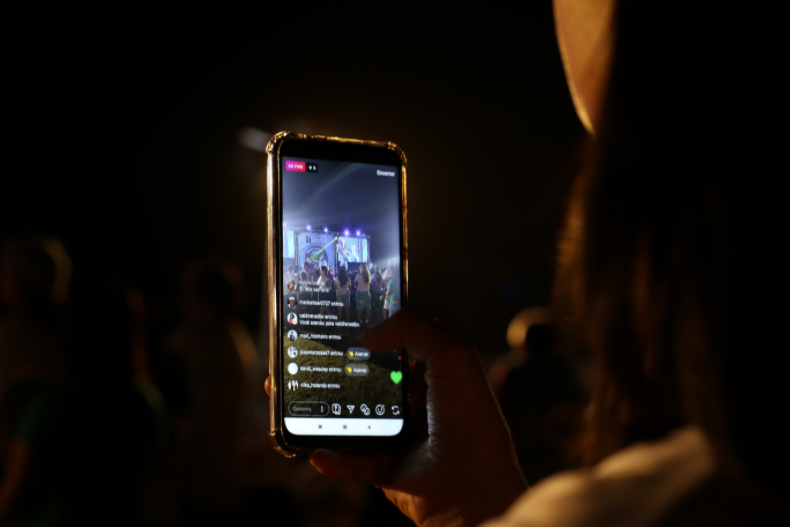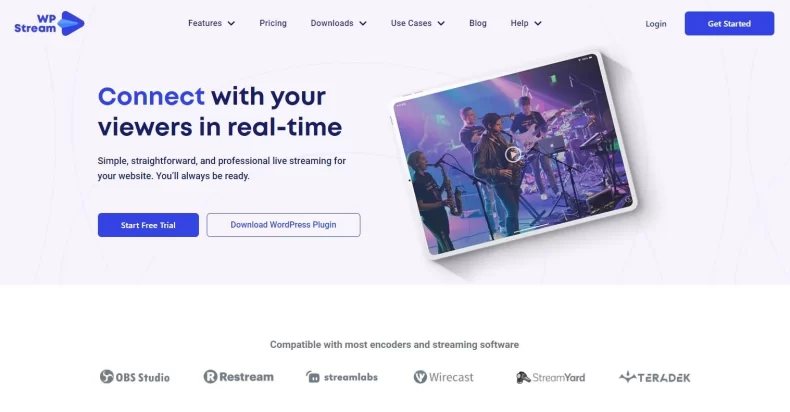Last modified: January 10, 2024
Pay-per-view (PPV) video streaming is a prominent model of distributing and monetizing high-quality digital videos online. Users must pay a fee to access the online video content they desire. This typically consists of movies, television shows, live concerts and sports events, and other forms of LIVE or Video-On-Demand content.
PPV streaming has become popular among individuals and businesses due to its convenience and accessibility. With video streaming becoming more affordable, it has become more accessible to a wider range of audiences. This has powered the growth of PPV video streaming services, offering a reliable way to monetize content.
Advancements in mobile technology, broadband connectivity, and digital delivery have made PPV video streaming more affordable and within reach of most people. This now affords businesses the opportunity to make their content available online for a fee. This has helped attract a wider target audience and expand their brand reach.
The delivery of PPV video streaming content is made possible through various platforms, including OTT (Over-the-Top) distribution channels such as Netflix, Amazon Prime, Hulu, and many more. There are also platforms such as YouTube, Vimeo, and Facebook that offer businesses and individuals the opportunity to monetize their video content.
In conclusion, PPV video streaming is a profitable model for sharing premium-quality video content with audiences in the digital age. It is a cost-effective, convenient, and accessible option that businesses can leverage to monetize their content, expand their brand reach, and generate revenue.

Source: Pexels
What is Video Monetization?
Video monetization refers to the generation of revenue from video content such as ads, sponsorships, subscriptions, and pay-per-view models. Video monetization is used by content creators, publishers, and platforms to earn money from their videos and build a sustainable business model.
Platforms such as YouTube, Twitch, and Facebook will allow you to monetize your videos and live streams via a partnership program or once you reach certain milestones. They utilize ads as well and streamers can earn money through ads that are placed on their videos.
Other platforms such as Netflix, Hulu, and HBO have a monthly subscription monetization process where viewers will pay a monthly fee to access everything on their websites.
All these platforms have different types of monetization which we will run through in this article.
Pay-Per-View Monetization
Pay-per-view live streams are services that allow viewers to access specific live events, such as sports matches, concerts, or conferences, by paying a one-time fee. These live streams are not available for free and usually require the viewer to purchase access through a platform that provides the service. The cost of access varies and can be quite expensive for high-profile events.
Viewers access the live stream through their computer, tablet or mobile device, and must have an internet connection capable of streaming the content. The fee for access is usually paid through an online payment platform like PayPal or a credit card. Once the fee is paid, the viewer gains access to the live stream, which can be watched in real-time.
Pay-per-view live streams have become popular as they provide a cost-effective way for people to access exclusive content that may not be available elsewhere. They also provide a revenue stream for event organizers and broadcasters, who can charge a premium for access to high-demand events.
Subscription Monetization
Subscription monetization refers to generating revenue by offering access to a product or service through a paid subscription model. This involves charging customers regular fees for accessing content, services, or products on a recurring basis, typically on a monthly or annual basis.
Examples of subscription-based monetization models include magazines, streaming services, software as a service (SaaS), and online courses. Subscription monetization is becoming increasingly popular for businesses looking to establish stable & recurring revenue streams, build customer loyalty, and reduce customer churn.
Video streaming subscriptions are services offered by various providers where users pay a fee to access and stream videos online, typically on a monthly or yearly basis. These services include platforms like Netflix, Hulu, Amazon Prime Video, Disney+, and others, which offer a vast library of movies, TV shows, documentaries, and other video content for users to watch at their convenience. Subscribers can access this content on multiple devices, including smartphones, tablets, smart TVs, and streaming devices. They also get access to exclusive content and new releases which are not available on other platforms.

Source: Pexels
How to price Pay-Per-View Video Content?
There are a few factors to consider when pricing pay-per-view video content:
- Length of the video: A longer video may be priced higher than a shorter one, as it offers more value to the viewer.
- Production value: If the video has high production value, such as professional cinematography, editing, and sound design, it can be justified to charge more.
- Niche or specialty content: If the video content is geared towards a specific niche, such as a training video for a particular industry, it may be priced higher based on the value it offers to that audience.
- Demand for the content: If the video content is in high demand, it may be priced higher to align with market demand.
- Competitor pricing: Researching competitor pricing in the same category can help you determine a competitive and reasonable price for your pay-per-view video content.
Ultimately, it is important to find a balance between offering value to your viewers while ensuring that your pricing is profitable for your business.
What are a few guidelines that you should follow when pricing a video or live stream?
There are a few unspoken ‘rules’ that you should follow when deciding how and what to price your live streams or Video-On-Demand content.
- Determine the value of your content: Consider the quality, uniqueness, and demand of your content when setting a price. Look at what your competitors are charging for similar content to get an idea of what your target audience is willing to pay.
- Consider your target audience: Know your audience and what they can afford. Determine whether you are targeting a broad audience or a niche group, and what price points they are comfortable with.
- Set a reasonable price: Do not price too high or too low. Consider the cost of production, distribution and marketing, and factor in a profit margin.
- Offer different pricing tiers: Consider offering different pricing options, such as a one-time fee, a subscription-based model, or a per-view fee. This will allow customers to choose the option best suited for their budget.
- Test your pricing: Conduct surveys or run a test campaign on a small scale to determine the optimal price point.
- Consider promotional pricing: Offer promotional pricing to incentivize customers to buy, such as a discount for early-bird purchases or bundle discounts for multiple viewings.
- Monitor and adjust pricing: Regularly monitor consumer behavior and adjust pricing as needed. If sales are slow, consider lowering the price or offering a promotion to drive traffic.
Creating your Pay-Per-View Video Streaming website
Determine the purpose of your website: Before you start creating your website, you need to determine the purpose of your website. What is your website going to offer? Who is your target audience? What kind of videos do you plan to show? This article explains how you can create your very own live streaming website.
Next, choose a website builder: There are many website builders available that can help you create your own pay-per-view video website without having to hire a developer. Some popular options include WordPress, Wix, and Squarespace.
Finally, set up a payment gateway: You will need to set up a payment gateway on your website so that people can pay for your videos. This can be achieved using various payment gateways such as WooCommerce, PayPal, Stripe, or Authorize.net.
Check out a few of the most sought-after streaming platforms on the web.
Choose your Video Streaming Solution
Once you have set up the technical aspects, choose your streaming platform. If you have a WordPress website, you are in luck! WpStream is the go-to video streaming plugin for WordPress users that makes streaming as easy as possible for beginners all the way to professionals. The best part is that you can use WooCommerce with WpStream as it is perhaps the most widely used E-Commerce solution. You can either create Pay-Per-View live streams and VODs, or alternatively, subscription ones!
Here’s how WpStream can help you:
- Go LIVE via your browser or using an external streaming app such as OBS Studio, StreamYard, or Restream.io, especially if you also plan to multi-stream to different platforms.
- Record live streams to create Video-On-Demand content or upload your own videos. Create high-quality videos, and upload them to your website. Make sure to optimize the videos for good viewing quality and ease of streaming.
- Set up pricing and payment plans: Decide on your pricing and payment plans. Will your videos be available on a pay-per-view basis, or will you offer monthly or yearly subscriptions? Make sure to price your videos competitively and offer value for money.
- Market your website: Once your website is up and running, it’s time to start promoting it. Use social media, email marketing, and other digital marketing tactics to reach your target audience and promote your website.
- Monitor and optimize your website: Keep a close eye on your website’s performance and make necessary changes to optimize it. Use analytics tools to track traffic and engagement, and make changes where necessary to improve your website’s performance.

Conclusion
If you decide to turn your old-school, regular website into a video streaming website, WpStream is the right solution for your needs. With multiple monetization options, you are free to explore what works for you and you can also mix and match with different monetization (and free-to-view) options!
Register today and receive up to 5.5 GB of streaming data to start your live streaming and On-Demand journey!
Table of Content







